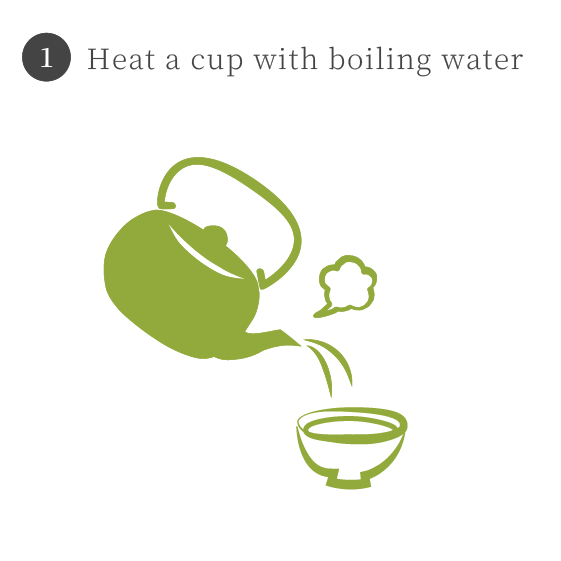The higher the quality, the stronger the sweetness and deliciousness of the tea, with less bitterness and astringency, a better aroma and deeper colours of the tea leaves. The transparency of the liquor (= suishoku [water colour]) is also enhanced.
Gyokuro
What Is Gyokuro?
Like tencha, gyokuro is made by shading the tea plants to block sunlight while the sprouts grow. This process prevents the development of bitterness and astringency, enhancing the sweetness and umami. As a result, gyokuro has a deep, mellow character with a rich, profound flavor. High-quality gyokuro features a distinctive ‘oika’ aroma, reminiscent of dried laver, due to its powerful sweetness and umami.
Quality Differences
sweetness
Deep and strong, with a mellow flavor that spreads in the mouth, offering a refined and balanced taste.
Weak, with bitterness and astringency overshadowing the sweetness. Lacks depth and does not spread well in the mouth.
umami
Very strong. The tea is mellow and wraps around the tongue with rich thickness, leaving a deep aftertaste.
Thin. The umami is overshadowed by bitterness and astringency when brewed at a higher temperature.
bitter and astringent
A very subtle bitterness and astringency are hidden beneath the sweetness and umami, with no off-putting aromas.
Bitterness and astringency become more noticeable when brewed at higher temperatures. The bitterness has a slight edge and is intensified by the astringency.
aroma
High-quality gyokuro features a unique "oika" aroma, reminiscent of dried laver. It has a rich and deep character with a soft, luxurious feel, and maturation enhances its fragrance.
Simple and rough, lacking depth and complexity. It does not spread well in the mouth and feels superficial.
colour
Glossy on the surface, with a dark green color that's vibrant. Thick in the center but gradually tapers towards the ends.
Dry and lacking gloss, with most leaves being flat and soft rather than round and firm. Used leaves are reddish and yellowish with noticeable leaf veins.
liquor colour
Clear pale green with minimal redness and yellowness. Highly transparent.
Pale green with noticeable redness and yellowness. Turbid, dull, and cloudy.
How to Make Good Cups of Tea (for two)
When brewing green tea, its sweetness is more easily extracted with lower temperature water, while higher temperatures release more bitterness and astringency. The appeal of gyokuro lies in its deep sweetness and umami. By brewing it slowly at a lower temperature, you can enhance these qualities.
We recommend using a small teapot and cups, as gyokuro is similar to espresso in that its richness and flavor are best enjoyed in concentrated, small amounts.
Recommended Way To Drink
Cold Brew Gyokuro

how to store
Here are some tips to keep your tea fresh and enjoy it to the fullest













